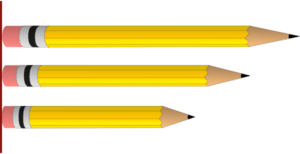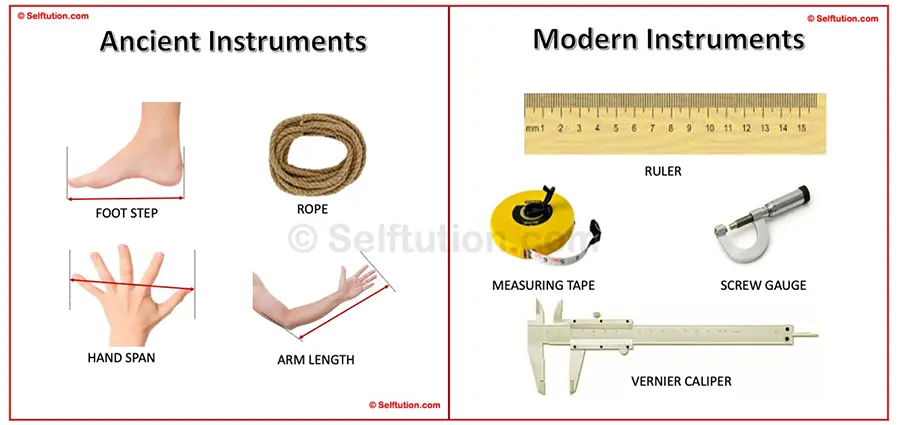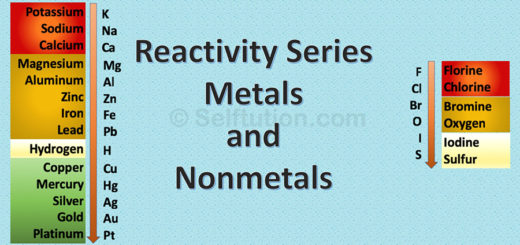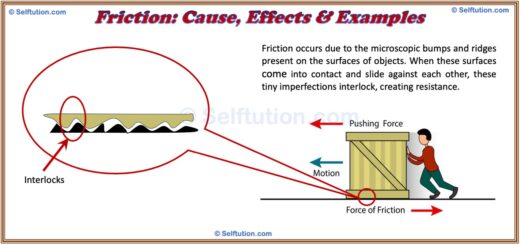Measurement Of Length – Standard Units and Instruments
Understanding the measurement of length is fundamental in various aspects of life, from construction to everyday tasks. Length measurement involves determining the distance between two points, whether it’s width, thickness, depth, or height.
In this blog post, we delve into the intricacies of length measurement, tracing its evolution from ancient times to the modern era. Instruments used to measure length have evolved significantly over time.
The Standard International (SI) unit for measuring length is the “meter,” but throughout history, people have employed diverse tools and methods for this purpose. From ancient instruments like hand spans, feet, and ropes to contemporary tools such as rulers, meter scales, and vernier calipers, we explore the transition and advancements in length measurement techniques.
Join us as we uncover the fascinating history, practical applications, and modern innovations in the measurement of length, shedding light on its significance in our daily lives and scientific endeavors.
Topics Covered:
Definition of length
Length is the measure of distance between any two points.
Definition for Measurement of Length
Measurement of length is the process of measuring the distance between any two points in term of width, thickness, depth, and height.
Continue>>Measurement of length
IMPORTANCE OF MEASUREMENT OF LENGTH
To grasp the significance of measurement, consider this scenario: if you have two pencils and want to determine which one is longer, you can simply place them side by side. Yet, there are instances where moving objects isn’t feasible. For instance, comparing your teacher’s table with your dining table involves logistical challenges. However, you can determine their lengths by using the span of your palm. This method allows you to easily discern which table is longer without physically moving either. The key here is adaptation: rather than relocating the tables, you shift your perspective from the school to home. Here, you employ another instrument or tool—your palm—to measure length, facilitating a simple and effective comparison.

Comparing the length of pencils, image courtesy: http://www.clker.com
Likewise, various instruments facilitate length measurement, including rulers, meter scales, measuring tapes, vernier calipers, and screw gauges. These tools empower us to accurately assess lengths without the need for physical relocation, enhancing our ability to make informed decisions and comparisons in various contexts.
STANDARD UNIT (SI) FOR MEASUREMENT OF LENGTH
The importance of a standard unit for measuring length becomes evident when considering the accuracy and consistency of measurements. In the example provided, using the span of one’s palm to measure length may seem straightforward, but it lacks precision. For instance, if you and your father both measure the length of a sofa using your hand spans, discrepancies arise due to variations in hand size. Your measurement might yield more hand spans when compared to your father’s, simply because your hand span is smaller.
To address such inconsistencies and maintain uniformity in measurements, people worldwide adopt the meter as the standard unit for length. The meter offers a precise and standardized reference point, ensuring that measurements are consistent across different contexts and individuals. Utilizing the meter scale as the standard instrument further enhances accuracy, providing a reliable means of measuring length in various applications. By adhering to a universally accepted standard unit like the meter, we promote accuracy, consistency, and reliability in length measurements, facilitating effective communication and collaboration across diverse settings.
To ensure that it is the same meter used everywhere, the standard meter was defined by scientists as below:
Definitions of the meter (1798) –
One meter is one ten-millionth (1/10,000,000) of the distance from the Equator to the North pole along the longitude passing through the Paris in France.
Definitions of the meter (1927) –
Meter is the length between two marks on a metal bar made of 90% platinum and 10% iridium alloy. This bar is maintained at constant temperature of 0oC and is placed on two rollers. It is kept near Paris in France.
Definition of the meter (1988) –
Length of the path travelled by light in a vacuum in 1/299,792,458 of a second.
To know more about the history of the meter, visit: History_of_the_metre
MULTIPLES AND SUB-MULTIPLES OF METER
The unit meter is too small for measuring some lengths and too large for others. So, it was decided to increase it in multiples of 10 for large measures and decrease it by sub-multiples of 10 for small measures. These multiples and sub-multiples of the meter are given special names as given below:
Multiples of Meter
Decameter (dam), 1 dam = 10 meters = 10 m
Hectometer (hm), 1 hm = 100 meters = 100 m
Kilometer (km), 1 km = 1000 meters = 1000 m
Astronomical Unit (AU), 1 AU = 149,600,000,000 meters = 1496 x 108 m
Light year (ly), 1 ly = 9,561,000,000,000,000 meters = 9461 x 1012 m
We use the astronomical unit and the light-year to measure a distances between objects with an extremely large distance between them. Such as distances between planets and galaxies in the Universe.
Sub-multiples of Meter
Decimeter (dm), 1 dm = 0.1 meters = 1.0 x 10-1 m or 1 m = 10 dm
Centimeter (cm), 1 cm = 0.01 meters = 1.0 x 10-2 m or 1 m = 100 cm
Millimeter (mm), 1 mm = 0.001 meters = 1.0 x 10-3 m or 1 m = 1,000 mm
Micrometer (μm), 1 μm = 0.000001 meters = 1.0 x 10-6 m or 1 m = 1,000,000 μm
Nanometer (nm), 1 nm = 0.000000001 meters = 1.0 x 10-9 m or 1 m = 1,000,000,000 nm
Angstrom (Å), 1 Å = 0.0000000001 meters = 1.0 x 10-10 m or 1 m = 10,000,000,000 Å
We use units like the Nanometer and the Angstrom for the measurement of extremely small sizes, such as the diameter of atoms or molecules.
OTHER UNITS FOR MEASUREMENT OF LENGTH
Apart from the units mentioned above, some people use foot, inch, yard, and mile as units for the measurement of length.
Inch (in), 1 in = 2.54 cm
Foot (ft), 1 ft = 12 in or 30.48 cm
Yard (yd), 1 yd = 3 ft or 36 in or 91.44 cm
Mile (mi), 1 mi = 1760 yd or 5280 ft or 63,360 in
INSTRUMENTS USED FOR MEASUREMENT OF LENGTH
In ancient times, people relied on body parts like outstretched palms, feet, and arm-lengths (cubits) as instruments used to measure length. However, these methods varied between individuals and couldn’t serve as universal standards. To ensure consistency, scientists developed standard instruments for length measurement, widely accepted by most people.
Common standard instruments used to measure length include rulers, meter scales, measuring tapes, vernier calipers, and screw gauges. Measuring tapes and odometers are used for lengthy distances, like road lengths. Odometers track distances traveled by wheeled vehicles such as cars and trucks. For precise measurements of small lengths, like nail or paper thickness, vernier calipers and screw gauges are employed. Rulers and meter scales suffice for everyday household measurements.

Ancient & Modern Instruments for Measurement of Length
These standard instruments provide accuracy and reliability in length measurements across various applications. They eliminate confusion caused by varying individual measurements and ensure consistency in measurements. Whether measuring long distances or tiny dimensions, these instruments offer precise results, facilitating effective communication and collaboration in diverse fields.









